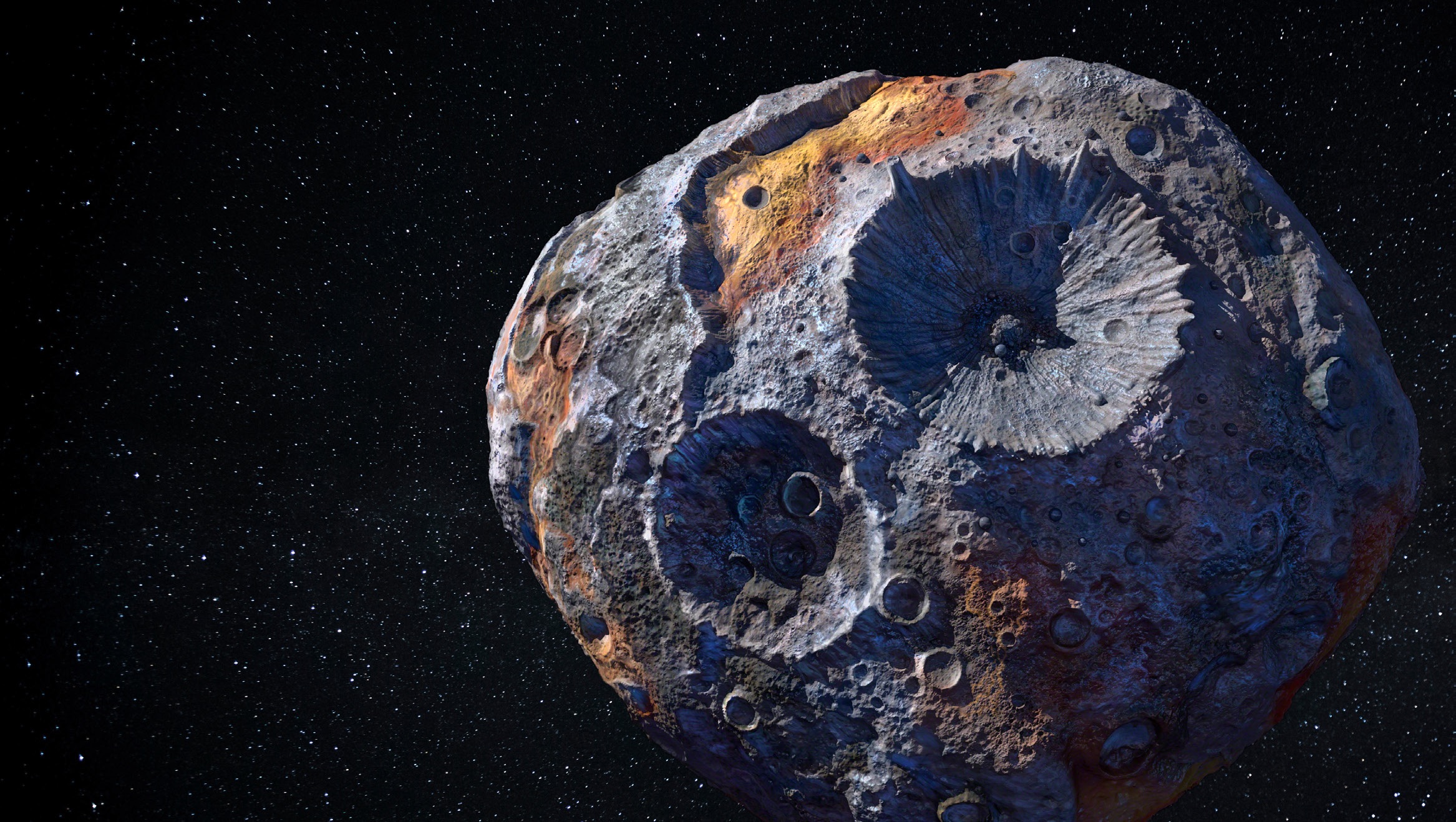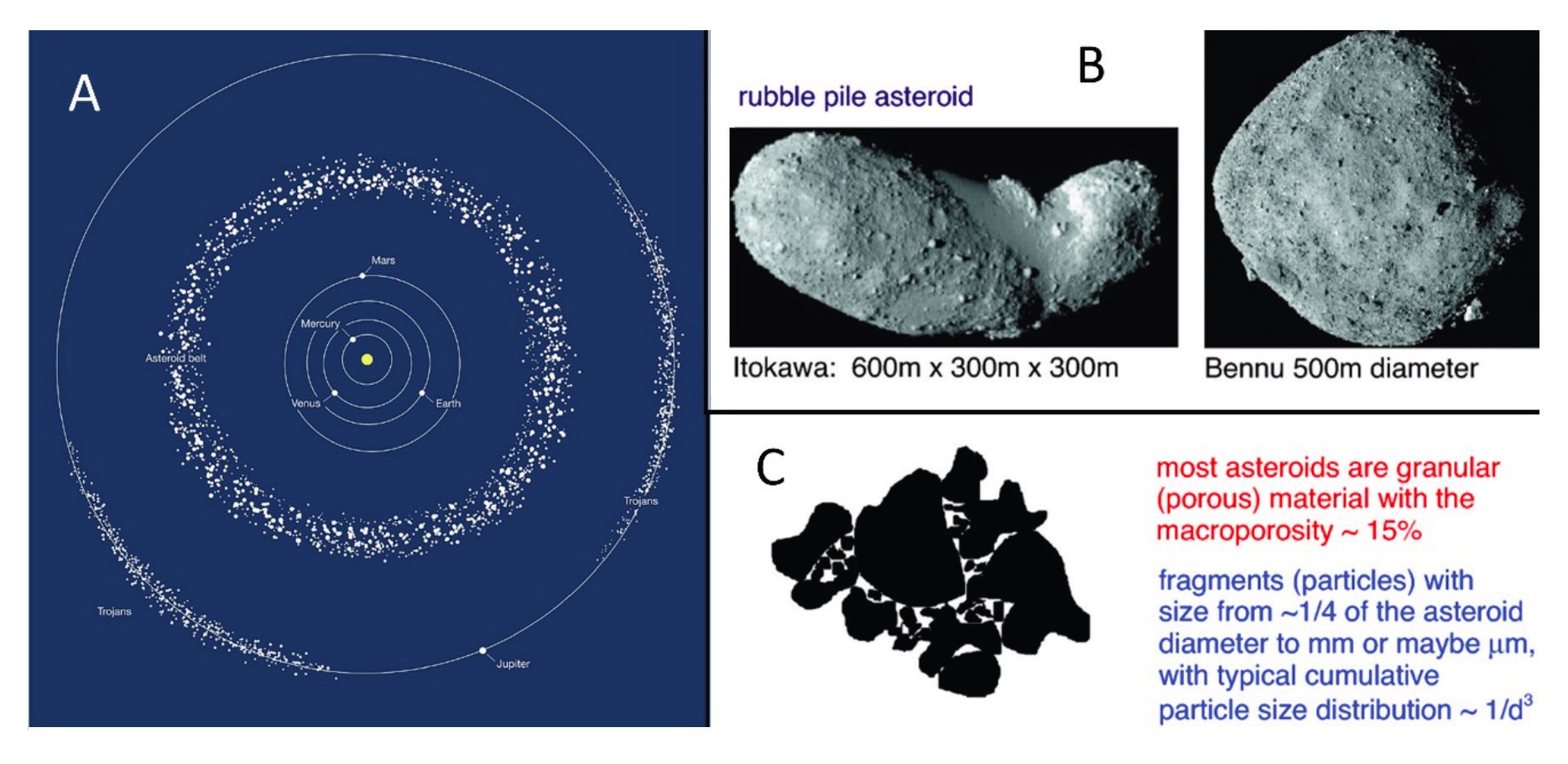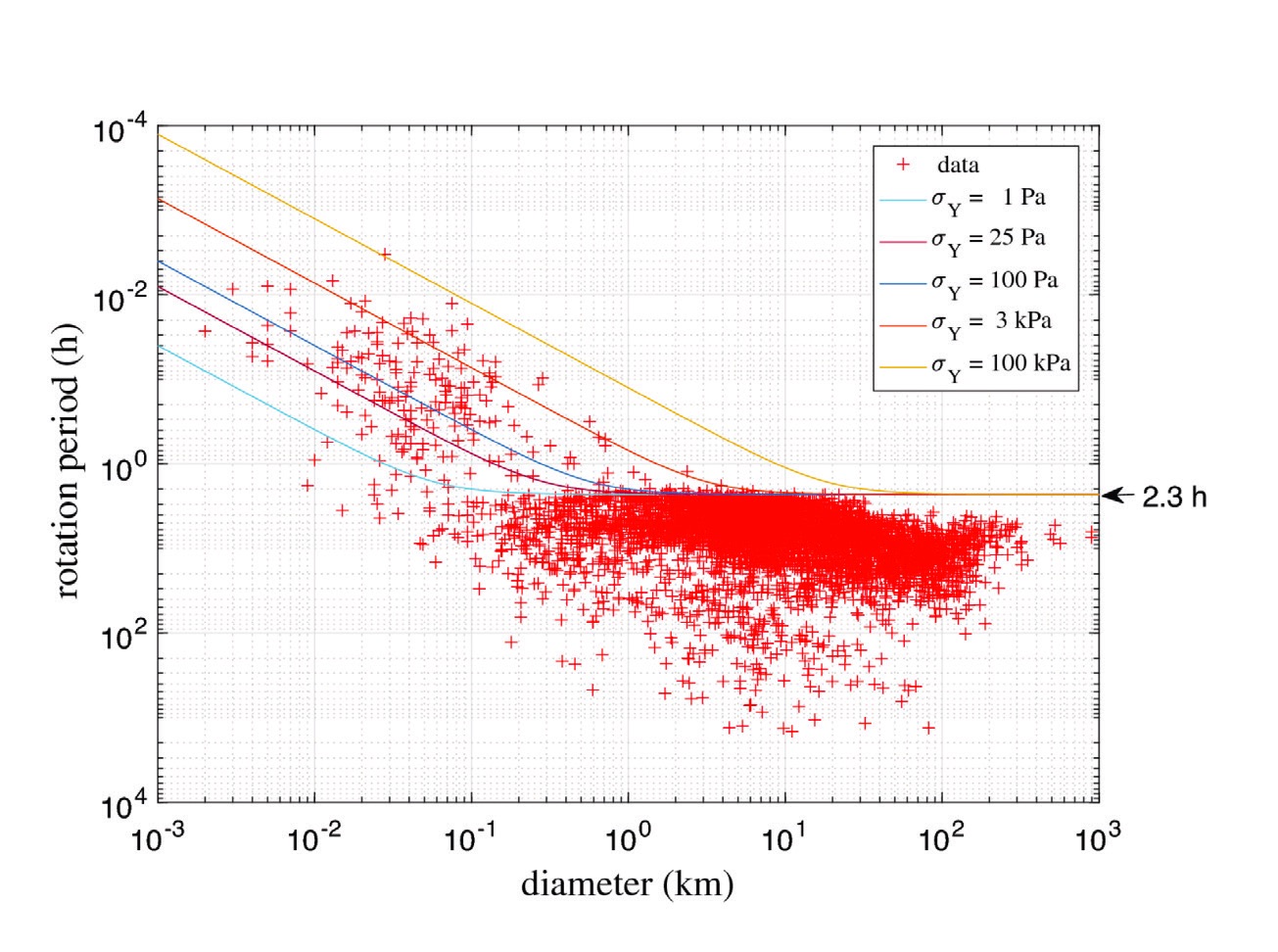Contact mechanics and the cosmos
Drs. Wilfred T. Tysoe & Nicholas D. Spencer, Contributing Editors | TLT Cutting Edge June 2022
Contact mechanics can explain the anomalously fast rotation of asteroids.

The asteroid belt between Mars and Jupiter was formed about 4.6 billion years ago from the leftover debris after Jupiter had finished coalescing
(see Figure 1a). Asteroids range in size from Ceres (about 100 km across) to less than 10 m
(see Figure 1b), and most consist of an agglomeration of various-sized particles known as rubble-pile asteroids
(see Figure 1c). All but the largest are irregular in shape and generally spin with a period of longer than 2.3 hours, although a significant proportion rotate more rapidly
(see Figure 2).

Figure 1. (a) The asteroid belt between Mars and Jupiter was formed ~4.6 billion years ago, at the same time as the solar system. (b) Most asteroids with diameters >300 m consist of many fragments mainly kept together by gravity and denoted rubble-pile asteroids and are non-spherical due to the weak gravitational field. (c) Particles in rubble-pile asteroids show a cumulative probability distribution, which scales roughly with diameter d as 1/d 3. Published with permission from Ref. 1.

Figure 2. Almost all asteroids with d ≳300 m rotate with a period longer than 2.3 hours, but some smaller asteroids rotate much faster. This is only possible if they are compact solid blocks, or are rubble pile asteroids where the fragments are bound together by some adhesive bonds. The lines show the effect of cohesive stresses between particles on the rotation period. Published with permission from Ref. 1.
Assuming that the fragments are held together just by gravity, and by assuming that a particle on the surface of the asteroid feels both gravitational and centripetal forces, it can be quite easily shown that the maximum angular velocity
ω0 that can that be sustained before the asteroid flies apart is given by:
ω0= 4
πGρ/3, where
G is the gravitational constant and
ρ is a bulk density of rock (~ 2,000 kg/m
3).
1 This yields a maximum rotational period
T0=2π/
ω0 of 2.3 hours, in excellent agreement with experimental observations
(see Figure 2); this simple theory predicts that more rapidly spinning asteroids should simply fly apart, and most of them do.
However, some of the small asteroids can rotate up to 100 times more rapidly without breaking up
(see Figure 2), suggesting that there must be some other forces holding the particles together.
In order to understand what they are, Bo Persson at the Peter Grünberg Institute at the Forschungszentrum Jülich, along with Jens Biele from the German Aerospace Center in Cologne, both in Germany, collaborated to identify the origins of these interparticle forces. While they discounted the capillary force as being relevant because of water evaporation in the vacuum of outer space, its effects were analyzed in their paper because of potential applications to terrestrial systems. They identified van der Waals’ interactions as being the most likely candidate for the additional forces.
The authors showed that a cohesive stress of ~25 Pa was required to stabilize asteroids spinning with rotational periods of less than 2.4 hours
(see Figure 2), and suggested that this would be most likely when the large fragments are bound together by a matrix of smaller ~10 μm particles that would provide a “cement” between the larger ones.
An analysis of the contact mechanics of such small particles revealed that, for sufficiently rough particles made from a stiff material (such as that of an asteroid rock), the adhesion force between particles surprisingly does not depend on their sizes, and is typically 10
-9 N.
This implies that the cohesive strength of a granular material depends on the number of particle-particle contacts per unit area alone; a decrease in particle size merely increases the number of contacts without changing the strength of the particle-particle adhesive bond. As a result, the existence of asteroids with a yield strength of ~25 Pa can only occur when there are enough small particles present to form a cement matrix (glue) between the bigger ones.
It is remarkable to see how contact-mechanics ideas developed on earth can be used to understand phenomena millions of miles away. However, the authors pointed out that such ideas also can potentially be used to analyze other similar phenomena such as dust adhesion to surfaces or why bees do not seem to get pollen in their eyes!
REFERENCE
1.
Persson, B.N.J. and Biele, J. (2022), “On the stability of spinning asteroids,”
Tribology Letters, 70, 34.
Eddy Tysoe is a distinguished professor of physical chemistry at the University of Wisconsin-Milwaukee. You can reach him at wtt@uwm.edu.
Nic Spencer is emeritus professor of surface science and technology at the ETH Zurich, Switzerland, and editor-in-chief of STLE-affiliated Tribology Letters journal. You can reach him at nspencer@ethz.ch.